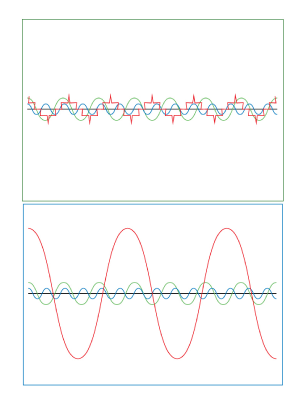Gradient consults and testifies on a wide range of topics related to potentially responsible party (PRP) cost recovery/allocation. Gradient’s strong forensic and transport modeling skills, detailed knowledge of industrial history and the numerous approaches to allocation, and clear and compelling communication skills are instrumental to our work in this area. While our experience has taught us that every site and case is specific, our allocation work is predicated on scientifically rigorous, empirical analysis of the data and its relationship to cost and PRPs.
Our cost recovery/allocations rely on Gradient’s depth in forensics, transport modeling, remedy concepts, risk assessment, chemistry, and data-based analysis to offer clear reasoning and simple approaches. The mediation and economics of cost recovery/allocations become much simpler when the contamination and causation are clearly defined.
Example Publications:
Herman, KD; Wannamaker, EJ; Jegadeesan, GB. 2012. “Sediment PAH allocation using parent PAH proportions and a least root mean squares mixing model.” Environ. Forensics 13:225-237.
Merrill, DE; Drivas, PJ; Butler, EL; Jegadeesan, GB. 2011. “Determination of PCB release time-frame using weathered congener and homolog fingerprints and a multicomponent evaporation model.” Environ. Forensics 12(1):35-48.

Polychlorinated Biphenyl Sediment Remedy Cost Allocation
For one paper company among several with historical polychlorinated biphenyl (PCB) discharges, Gradient developed cost allocation strategies using Gore and other equitable factors in a cost contribution claim. Our allocation model considered the distribution of PCBs in river sediments, fate and transport modeling, and the operational history of the paper mills.
Great Lakes Sediment Superfund Site Cost Allocation
Gradient developed a cost allocation for a Great Lakes Superfund site where sediments were contaminated from multiple historical sources, including manufactured gas plant (MGP) and wood-treating operations. Our allocation model examined historical operations and waste practices, polycyclic aromatic hydrocarbon (PAH) and non-aqueous phase liquid (NAPL) contamination patterns, and contaminant mass/volume estimates.
Groundwater Plume Cost Allocation
To allocate liability and costs associated with a large groundwater plume, Gradient modeled groundwater and contaminant transport and used chemical fingerprinting to estimate the contribution(s) of multiple sources. This approach enabled us to identify the sources of plumes that could have contributed contaminants to a public drinking water supply well field.
Cost Recovery for Radiologic Materials
In response to a Comprehensive Environmental Response, Compensation, and Liability Act (CERCLA) cost recovery claim, Gradient evaluated whether site activities to address radiologic materials were reasonable, necessary, and cost-effective. The scope of our analysis included the evaluation of cleanup levels, identification of potential sources based on the nature and extent of contamination, and research on potential sources from local industrial processes as well as natural background. In addition, we evaluated the incremental and stand-alone costs associated with the radiologic materials relative to other site contaminants.
Polycyclic Aromatic Hydrocarbon (PAH) Forensics Allocation
Gradient provided cost allocation support for an urban sediment Superfund site. Using multiple lines of evidence, including statistical source allocation, sediment transport analysis, and historical mass loading analysis, we were able to isolate the relative contribution of a former tar products facility to sediment contamination. Using weathering models, Gradient was able to demonstrate that the vast majority of sediment contamination was consistent with manufactured gas plant (MGP) tars. Our technical analysis was used in a cost allocation proceeding.
Cost Allocation Support at a Superfund Site
On behalf of a cooperating potentially responsible party (PRP) group, Gradient provided technical support for development of an equitable cost allocation at a Superfund site. We met with individual PRPs, reviewed historical documents, analyzed sediment contaminant concentrations, reviewed and critiqued sediment transport modeling efforts, and used chemical fingerprinting techniques to consider potential contaminant sources in the context of the industrial history of the site. Our combined expertise helped our client understand likely chemical releases at the site, within the limitations of available data.